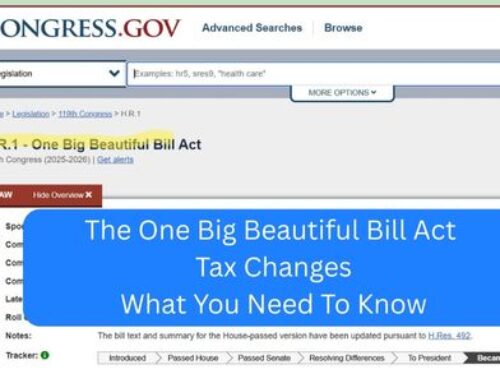Are you building a retirement tax time bomb?
UPDATED April 14, 2023 to reflect SECURE Act 2.0 RMD Changes
Conventional wisdom says retirees will be in a lower tax bracket in retirement than when they are working so they should defer taxes today. In some cases that deferment could be a hidden tax time bomb. Retirees who will receive a pension or have significant Traditional IRAs, 401(K), or TSP investments need to ensure they understand their tax liability across their retirement. Why might you have a retirement tax time bomb and is there anything you can do about it?
Income Tax Overview
The government taxes income that you make during the calendar year. This includes your salary, investment income (dividends and realized capital gains), rental property income, etc. Contributions to tax-deferred accounts (traditional IRA, 401(K), or TSP) can in some cases be deducted from your income. This gives you a tax break in the year a contribution is made. The money can then grow tax-deferred. The problem is that the government wants its money eventually and collects taxes on withdrawals from these accounts. It also mandates you must begin taking money from your traditional accounts in the year you turn 73 (or 75 for those born in or after 1960). These are called Required Minimum Distributions (RMDs).
The Problem
While this isn’t a bad deal to lower taxes today, investment growth and RMDs may add a large annual income stream once you turn 72 driving your taxes higher. The chart below shows projected values of savings based on different scenarios and the RMD in the year the owner turns 75.
| Age | Initial Value ($) |
Annual Investment ($) |
Years Investing (41-60) |
Value at 60 ($) |
Value at 72 ($) |
RMD at 72 ($) |
| 40 | 150,000 | 8,000 | 20 | 953,000 | 2,629,000 | 106,884 |
| 40 | 200,000 | – | 20 | 807,000 | 2,226,000 | 90,510 |
| 40 | 200,000 | 10,000 | 20 | 1,241,000 | 3,424,000 | 139,185 |
| 40 | 250,000 | 7,000 | 20 | 1,313,000 | 3,622,000 | 147,261 |
| 40 | 300,000 | 15,000 | 20 | 1,862,000 | 5,137,000 | 208,834 |
Assumptions for these projections: Traditional account balance at 40. Continued investing another 20 years into tax-deferred accounts then just allowing it to grow another 12 years until RMDs begin. Assumes 7% growth rate compounded monthly. The current RMD life expectancy factor is 27.4 at 72. The factor will decrease as you age meaning you will need to take a higher percentage of the money in the account each year. This may or may not translate into an increase in actual dollars each year as you take more and more from the account.
Want to project your own balance? Check out this calculator at investor.gov (Link). Take your balance at 75 and divide by 24.6.
Projecting your taxable income
When you add your annual RMD at 75 to your military retirement or traditional pension, social security and other income (rental real estate, capital gains, etc) you can see how this can quickly drive up your taxable income. This projected total will give you your projected tax bracket and marginal rate. In addition to standard income taxes, higher monthly Medicare premiums begin for those with Modified Adjusted Gross Income of $91,000 for single filers and $182,000 for joint filers.
One additional note for married couples: It is useful to also look at what would happen to you taxes after the first spouse dies. Social Security will most likely still be paid at the higher earners rate and if you have a pension or survivor benefit plan that will continue to pay either full or partial benefits it could lead to a change in tax rate for the surviving spouse.
Defusing Your Tax Time Bomb
There are several options that can make sense to defuse the tax time bomb concerns. This could be saving less in tax-deferred vehicles and instead using either Roth 401K or IRAs or even a taxable brokerage account which is taxed at capital gains tax rates. Taxable accounts also receive a step up in cost basis at the owner’s death. If you won’t need the money to fund retirement this could be a way to permanently avoid taxes on the increase in value. You may also consider converting Traditional IRA or 401K funds to Roth accounts in periods of low income or during stock market pullbacks. This could be the period between retirement starting and claiming of social security or required minimum distributions beginning.
They say tax law is written in pencil and as we’ve seen over the last few years it has been changing regularly. The SECURE Act 2.0 is currently pending and the recent major tax changes that reduced tax rates for many people are scheduled to sunset in 2026. That doesn’t mean you shouldn’t plan based on the best information we have. Developing a tax plan can save you a significant amount of money in retirement. This is money that you can use to improve your quality of life, give to charity, or leave as a legacy to your family.
If you’re interested in talking through your situation, consider setting up a no-cost discovery meeting (link).



